The Green Planet(Part Three)
◎万宇婧
前两期我们了解了北极圈和赤道的不同生态风景,也领略了冰雪世界与热带雨林的极致反差,更了解了植物是如何在极端环境中生存的。本期,我们将了解植物和植物之间、植物和人类之间相互依存的关系。

剧情简介
本期以“休戚与共”为主题,展示那些休戚与共的场景和生物。这些场景中,形形色色的生物相互依存、共同生长。无论是在荒漠中顽强生存的植物,还是为人类生活带来便利的单一作物栽培,都让我们感受到了生命的坚韧与伟大。
Scene A
在城市的钢筋水泥之中,依然有植物随风飘落并野蛮生长。有的是缝隙中的杂草,有的长成了大树。它们或许不起眼,但就在我们的身边,极其顽强地生存着。

Track 6
The relationship between plants and humans is extraordinary.We’ve been adapting to each other for as long as we’ve been on the planet.We rely upon plants for almost everything,the air we breathe,the water we drink,the food we eat,much of the clothes we wear and in some parts of the world,the very buildings in which we live.But that relationship is now changing.How it changes next will shape the future of our green planet.
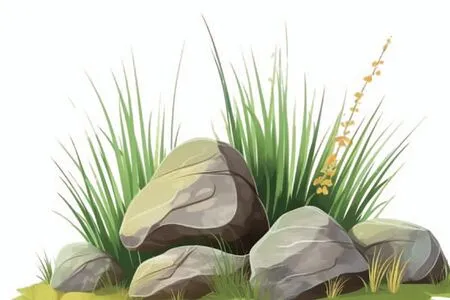
Some plants have the ability to live alongside us,even when we make it extremely difficult for them to do so.This is Piccadilly Circus,in the heart of London.It would be difficult to imagine a more1)hostileplace for a plant.And yet,even here,plants will find a way.Plants like this may seem to follow us wherever we go.We call them,perhaps a little unkindly,weeds.In fact,these plants are pioneers,the ones that are most able to take advantage of new habitats,even very2)harshones.
This wall is at least a hundred years old.It’s like a3)sheercliff face,with no sign of soil.And yet this Ivy-Leaved Toadflax thrives here.How? The plant grows towards the light with its flowers facing outwards to attract4)pollinators.But once they’ve succeeded in doing that,and the seed pod starts to develop,its behaviour changes.Now the pods turn,and grow away from the light,seeking the darkest place they can find,a5)creviceperhaps,like this one.It’s all the Toadflax needs.It can now germinate and start to produce a new plant.

Other pioneers have a different strategy.They instead distribute their seeds far and wide in great numbers.Sow thistles are masters of this trick.Each of its seeds is equipped with a tiny downy6)parachutewhich will catch the slightest breeze.And they can travel extraordinary distances.They can rise a mile high in the sky and reach places hundreds of miles away from the parent plant.
The seeds only need to find the tiniest chink and they can take hold.We barely notice many of these plant invaders.But here in the heart of Hong Kong,strangler fig seeds that landed on a stone wall generations ago,have spread their flexible,branching roots far and wide.They can be anchored so firmly that they become a part of the city’s architecture.This is,perhaps,the ultimate weed.
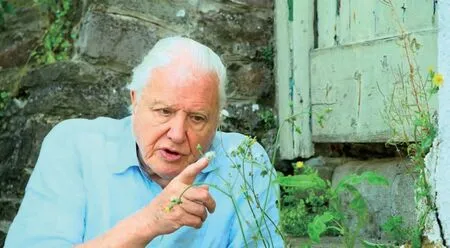
1) hostileadj.敌对的
2) harshadj.严酷的;严厉的
3) sheeradj.陡峭的
4) pollinatorn.传粉者
5) crevicen.裂缝
6) parachuten.降落伞
植物与人类之间形成了非同寻常的关系。自从地球万物诞生以来,人类与植物就开始了互相适应。人类生活的方方面面,大多离不开植物——我们呼吸的空气、我们喝的水、我们吃的食物以及我们穿的衣服,甚至在地球的某些地方,植物能为人类提供栖息地。然而,这种关系正在发生变化。这种变化的方向,将决定着这颗绿色星球的未来。
有一些植物能与人类比邻而居,哪怕我们留给它们的生存环境极为苛刻。这里是伦敦市中心的皮卡迪利广场。我们很难想象出还有比这里更不适合植物生长的环境。然而,即便在这里,植物也能找到求生之道。无论我们走到哪里,类似这样的植物似乎比比皆是。我们对它们的称呼似乎不太友善,把它们叫作“杂草”。事实上,它们是植物界的先锋。它们最为擅长适应新的栖息地,无论那里多么恶劣。
这面墙至少有100 年的历史了。它就像是一处陡峭的悬崖,毫无泥土的痕迹。然而,这株蔓柳穿鱼却在这里茁壮成长。它是怎么做到的?这种植物会向光生长,花朵朝外,以吸引传粉动物。但是等到花朵成功授粉,种荚开始发育之后,它的行为就会发生变化。现在,种荚调转方向,背离光线生长,寻找周围最黑暗的地方,也许是一个缝隙,就像是这里。这里正是蔓柳穿鱼需要的环境。它会在这里发芽并生成新株。
其他的植物先锋则拥有不同的生存策略。有些会反其道而行之,将大批种子散播到遥远的地方。苦苣菜是运用这一策略的高手。每颗种子上的冠毛如同小小的降落伞,每一丝微风都是机遇。它们可以随风飘到很远的地方,也可以升上一千米的高空,飘到距离母株数百千米之外。
只需要找到一条最微小的缝隙,种子就能生根发芽。几乎没人注意到这些“入侵”的植物。但是在香港的城市中心,很久之前掉落在石墙上的榕树种子,现已长成大树。历代以来它灵活的枝条与根系延伸的范围颇广。它们生长得非常牢固,与城市建筑融为一体。这大概就是最不同寻常的“杂草”了。
Know More
as long as 的常见用法
原文:We’ve been adapting to each other for as long as we’ve been on the planet.
★as long as 表示“只要;既然”
1.表示“只要”,用于条件状语从句,相当于so long as。
【例】They’ll respect you as long as you play fair.
只要你为人正直,他人就会尊敬你。
2.表示“既然,由于”,用于引导原因状语从句。
【例】As long as the weather is changeable these days,we’d better get in wheat in time.
由于这几天天气变化无常,我们最好及时把小麦收割完。
★其他的as...as 词组
1.as soon as 表示“一……就……”,常见的用法是在将来时态的情境中,遵守“主将从现”的原则。
【例】As soon as I finish my homework,I will go and play with you.
我一写完作业,就和你玩。
2.as well as 表示“也;既……又……”(注意:就远原则)。
【例】Your husband as well as you is friendly to me.
不仅你而且你的丈夫也对我很友好。
The girl is lively as well as healthy.
这个女孩既活泼又健康。
3.as far as 表示“就……而言”(等于so far as)。
【例】As far as I am concerned,I’m not against your plan.
就我而言,我并不反对你的计划。
As far as I could remember,I did return him the money.
就我所能记得的,我确实把钱还给他了。
Scene B
有些植物生长在极端环境中,为“垂死”的环境带来一丝希望。沙漠中的还魂草将自己伪装成一坨枯草。只要一有风,没有根的它便开始了漫长的跋涉之旅。寻到水源后,它便张开“枯萎”的外壳,露出绿色的内芯开始生长。

Track 7
Some deserts can be so dry that plants must find techniques of surviving for long periods without any water whatsoever.The Chihuahuan desert in North Mexico.Here,one particular plant plays the waiting game so well,that it spends much of its life looking dead and certainly not worth eating.And it can survive like this for a decade.
This is the7)resurrectionplant.It’s a kind of8)moss.It barely has roots and it certainly can’t store much water.But it can travel.After a particularly long drought,it breaks away from its roots and becomes a9)tumbleweed.Moving across the desert,it can travel a mile in a week.With luck,it may find water.Just a shower of rain can bring it back to life.As its fronds soak up the water,they unfurl.
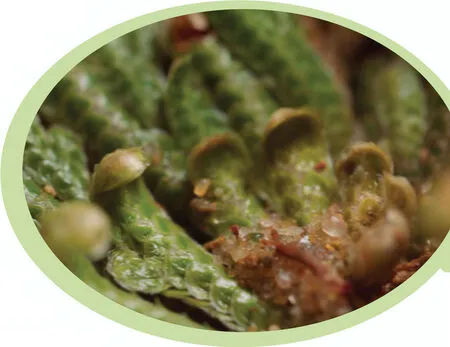
In its protected centre,it still has green cells which absorb both the water and sunlight,and rapidly produce the food it needs to resume its growth.It will grow for just as long as there is10)moisture.But when that disappears,it closes up once more and resumes its travels.
7) resurrectionn.复活;恢复
8) mossn.苔藓
9) tumbleweedn.[植]风滚草
10) moisturen.潮湿;水分
一些荒漠极其干旱,植物在完全没有水的情况下必须找到合适的方法,存活更长的时间。这是墨西哥北部的奇瓦瓦沙漠。在这里,有一种特殊的植物。它们把这种等待策略发挥到了极致,以至于生命中的大部分时间看起来都像是“枯死”的植物。当然也就不会被动物吃掉。它能以“假死”的状态存活将近十年的时间。
这就是鳞叶卷柏(还魂草)。它属于藓类植物。它几乎没有根。当然,也很少储存水分。但是它可以移动。如果遭遇很长时间的干旱,它们就会从根部断裂,然后随风滚动起来。它不停地穿越荒漠,可以在一周内移动一千米。如果幸运的话,它还能找到水源。些许雨水就能让它焕发生机。它的叶片在吸收水分之后就会展开。
层层包裹下的内芯,仍然有绿色的组织,可以吸收水分和阳光,并且快速产出植物所需的能量。只要能够获得水分,它就能继续生长。但是如果环境湿度降低,它又会卷成一团,然后再次踏上旅程。
考点解析
so that 与so...that...的用法
原文:Some deserts can be so dry that plants must find techniques...
1.so...that...意为“如此……以至于……”,引导结果状语从句。
【例】The book is so interesting that most kids become interested in it.
这本书如此有趣以至于大多数孩子都对它感兴趣。
2.so that 意为“以便;为了”,引导目的状语从句。
【例】My sister made a model plane so that she could help with her friend studying the science last night.
昨天晚上我妹妹制作了一个飞机模型,以便能帮助她的朋友学习科学。
3.注意“so+形容词+a/an+单数名词+that 从句”以及“such+a/an+形容词+单数名词+that 从句”的区别。
【例】The book is so interesting that many people want to buy one.
=It is such an interesting book that many people want to buy one.
这本书如此有趣,以至于很多人想买。
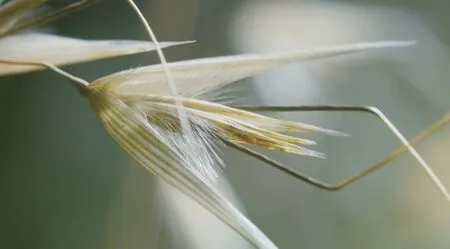
Scene C
在城市化的影响下,单一作物种植虽然为人类生活带来了便利,却挤压了其他植物的生存空间。

Track 8
It began over 10,000 years ago with plants that we found especially good to eat.At first,this relationship created challenges of its own.Many of the ancestral grasses,like these wild11)oatsfrom Israel,have a trick to ensure that their seeds are planted in the perfect place.Each seed head at the top carries two long12)bristlescalled awns,and when a seed drops to the ground,these awns do something truly extraordinary.They walk!
The awns13)twistas they dry out during the day and then,when they get wet,they untwist.Tiny hairs grip onto the ground keeping the individual moving forward.In this way the seeds work their way along the ground until eventually they find a rock to hide under or a crack to14)drillinto.This adaptation is useful for the plant,but not for us.It’s hard to collect seeds when they drop off and walk away!
So our ancestors selected plants whose seeds don’t drop off,don’t have legs and don’t bury themselves out of reach.They also selected those individuals which put their energy into developing much larger seeds.Close relationships like this have developed all over the world,producing the plants that are now our crops.This may seem a poor deal from the point of view of plants,but not so.We eat their seeds,but in return we cherish and15)cultivatethem.And now they are widespread and far more abundant that their wild ancestors.
You might call this a bargain between ourselves and plants.And over the years it’s proved extraordinarily powerful.Over time,these plants produced more food,increasingly efficiently.We started doing more and more for a small number of chosen species.These few persuaded us to eliminate their competitors,cure their diseases,poison their enemies,and keep them well watered,even when other species faced drought.Fewer and fewer plant species like soy,wheat and rice,now16)occupymore and more land.So now whole landscapes are dominated by a single species of plant.A monoculture.
11) oatn.燕麦
12) bristlen.鬃毛
13) twistv.转动;使弯曲
14) drillv.钻;训练
15) cultivatev.耕作;种植
16) occupyv.占
一万多年以前,我们发现了一些特别适合食用的植物。起初,这种关系本身引发了一系列的难题。许多原始的禾草类植物,比如这些来自以色列的野生燕麦,它们有一种诀窍,能确保种子在理想的地方生长。每一颗种子的顶部带有两根长毛,被称为“芒”。当种子掉落到地上的时候,这几根芒就会发挥神奇的作用。它们会“走”!
芒在白天干燥的时候会弯曲,等到湿度增大的时候,又会恢复原状。细小的茸毛紧紧地抓住地面,使种子向前移动。种子通过这种方式沿着地面前进,最终找到一块可供藏身的岩石,或者钻入可以钻入的裂缝。这种进化特征对植物而言很有意义,但是对人类来说是个难题。种子落地“走”远之后,我们就很难收集它们了。
所以,我们的祖先选择了种子不会掉落,也没有“双腿”,更不会让它们把自己深埋起来难以拾取的植物。他们还挑选出那些能发育出大颗种子的个体。这种密切的关系推广至世界各地,出现了我们现在种植的农作物。从植物的角度来看,这样有些不划算。但事实并非如此。虽然我们吃掉了它们的种子,但作为回报,我们呵护并培育它们。现在它们广泛分布,比它们在野外生存的祖先更加多姿多彩。
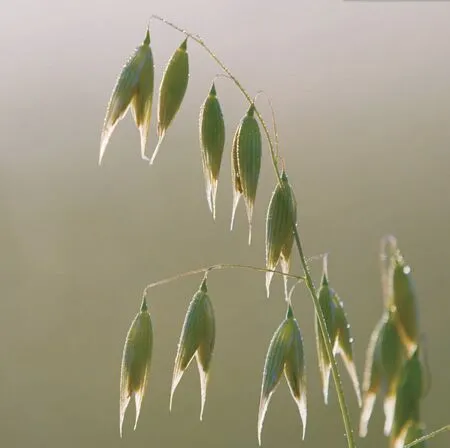
可以这么说,这是一笔人类和植物之间的交易。随着时代的变迁,它的非凡力量可见一斑。随着时间的推移,这些植物的产量越来越大,生产效率越来越高。我们对选中的少数物种投入得越来越多。我们为选中的少数物种消灭它们的竞争对手,治疗它们的疾病,毒杀它们的天敌,并且提供充足的水源,哪怕其他植物面临着干旱。现在越来越少的农作物比如大豆、小麦和水稻,占据了越来越多的土地。于是放眼望去,到处都是单一的种植物种。这就是,单一作物栽培。
Know More
“芒种”的“芒”是什么?
“芒种”的英文是Grain in Ear——grain 为谷物/粒,ear 在此处不是指“耳朵”,而是指谷物的“穗/芒”,“穗/芒”的植物术语是awn。
“芒种”是二十四节气之一,每年6 月5 日或6 日,视太阳位置到达黄经75°时开始。“芒种”之“芒”,本义是谷物种子壳上或草木上的细刺,而“芒种”之“种”,则有两种解释——作为名词的“种”(zhǒng),指植物的种子;作为动词的“种”(zhòng),则指播种。也就是说,“芒种”的一种解释是指有芒的种子,即麦、稻等谷物结出果实、长出种芒;而另一种解释则是指应当从这一时间节点开始谷物的种植。
“时雨及芒种,四野皆插秧。家家麦饭美,处处菱歌长。”陆游所描绘的芒种时节是那样多姿多彩、生机盎然——既有雨后的舒爽,又有夏日的热情;既有田里的稻秧,又有桌上的麦饭;既有农事的忙碌,又有歌声的悠然。芒种,不但是对谷物旺盛生命力的直观描述,更蕴含着中华儿女对美好生活的期待。


